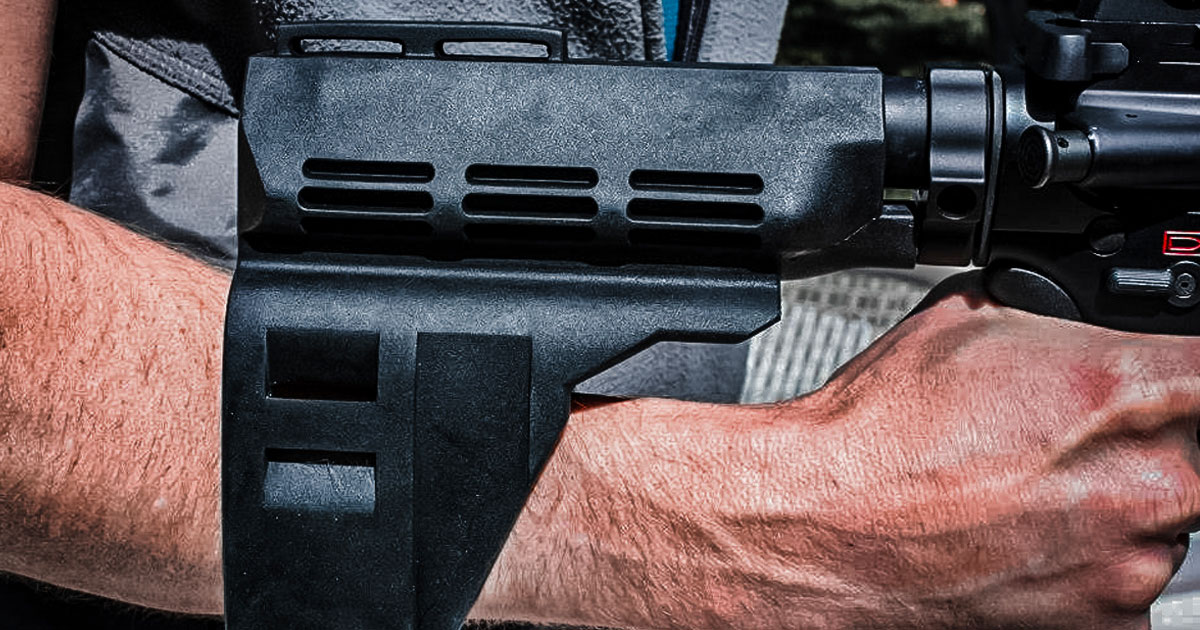
This is unquestionably a setback, but it is only the first round in what promises to be a protracted fight to defend the rights of law-abiding gun owners.
The new ATF rule reclassified most weapons with the popular accessories to now be short-barreled rifles (SBRs). With this designation, which came after the White House ordered the agency to focus on stabilizer braces, a horde of steps must be taken by individuals who were previously perfectly legal firearm owners.
These Americans must either register their modified weapons, which are now SBRs, in accordance with the National Firearms Act of 1934, add a longer barrel to skirt the legal definition of an SBR, alter the brace so it is incapable of being reattached, or hand their weapons over to the ATF.
All of this came after years of the agency being fine with the modifications. After all, these braces were designed to assist disabled veterans to be able to continue to enjoy sport shooting.
But the case of Mock v. Garland, which was pursued by the Firearms Policy Coalition (PFC) in the Northern District of Texas, sought to overturn this unconstitutional overreach by an unelected federal agency. PFC asked Judge O’Connor to grant a preliminary injunction against the new rule, but he declined.
For its part, PFC argued that the ATF went past its legal authority in violation of the Administrative Procedures Act. This argument did not sway O’Connor, who ruled that the federal agency indeed has the power to determine the definition of a rifle.
The judge declared that the meaning of “rifle” is unclear and open for interpretation.
“Given that other courts have recognized ATF’s authority to interpret the statutes it has been charged with administering when there is an ambiguity, it is not substantially likely that the Final Rule exceeds the agency’s scope of authority on this basis as the statute includes ambiguous terms in its definition of rifle.”
In other words, the federal government is free to change the definition of a firearm as, incredibly, it has not already been established.
FPC also told the court that the ATF drastically altered the regulations on pistol stabilizer braces it initially proposed. Effectively pulling a “bait and switch,” the agency issued a Final Rule that settled far from where it began as a proposal.
For example, the public comment period focused on protocols laid out in a proposal worksheet that was not even included in the Final Rule. This argument, however, also held no sway over the court, which flatly stated that it is not necessary for the Final Rule to proceed directly from the proposed Rule.
In turn, this is not a violation of the Notice of Proposed Rulemaking, according to O’Connor.
“Importantly, the final rules that are merely “interpretive” are not subject to these same notice and comment requirements, therefore do not need to satisfy the logical outgrowth test, and may take immediate effect,” he declared.
Another point of contention for FPC was one regularly presented by Second Amendment advocates when bureaucrats take the legislative process into their own hands. The plaintiffs asserted that the ATF lacked “a clear delegation from Congress” to enact what is in effect a new legal definition.
Yet again, O’Connor disagreed.
He ruled that the ATF merely interpreted instead of rewriting the applicable statutes. This, he decided, made the FPC claims “unavailing.”
Certainly, this is just the first of many legal battles coming on this unconstitutional overreach. The ATF rules are being challenged on many legal fronts, and Second Amendment advocates should take heart in that this effort is far from over — it is just getting started.
